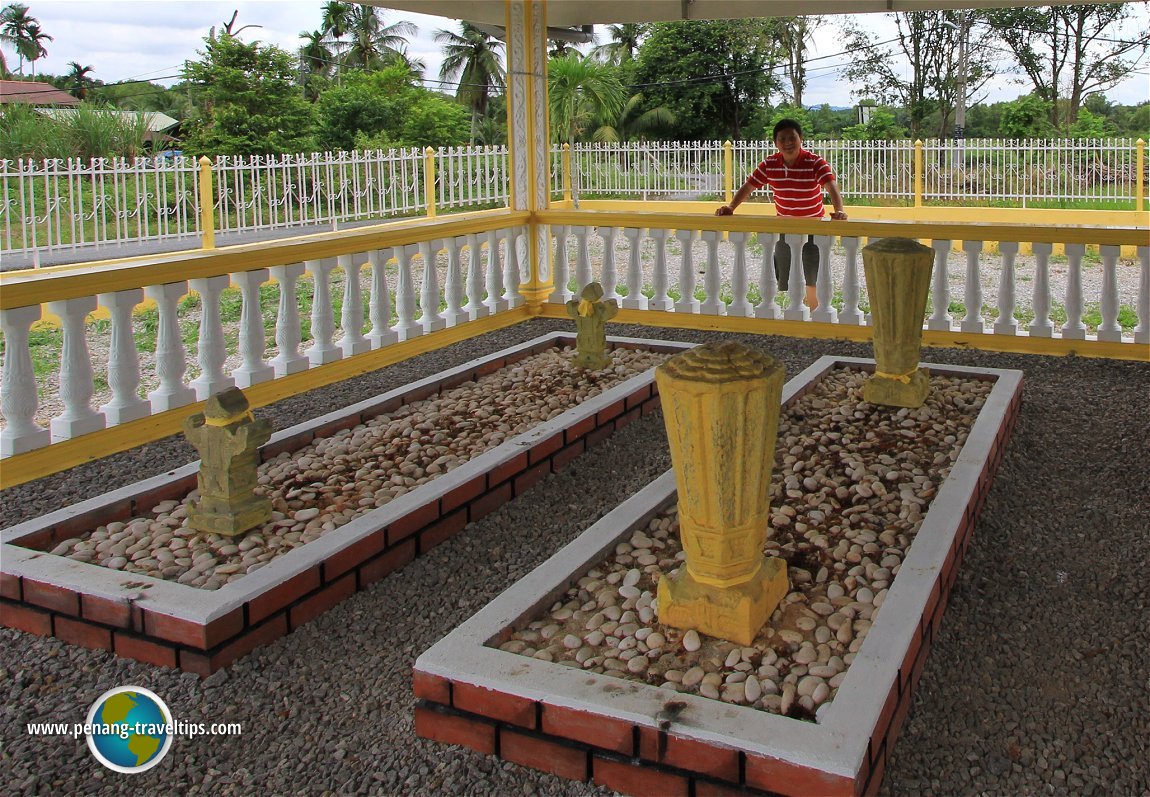 Makam Sultan Muzaffar Shah I of Kedah (11 August, 2015)
Makam Sultan Muzaffar Shah I of Kedah (11 August, 2015)
The Tomb of Sultan Mudzaffar Shah I, or Makam Sultan Mudzaffar Shah I (GPS: 5.68591, 100.4478) is the grave of the first ruler of Kedah to convert to Islam. As would be expected in transcriptions, you will find his name in various versions including Muzaffer Shah, Muzafar Shah, Al Mudzaffar Shah, Phra Ong Mahapodisat and so on. He was the 9th ruler of the Kadaram kingdom, and held the title of Dubar Raja II (also written Maharaja Derbar Raja II or Sri Paduka Maharaja Durbar Raja II). Sultan Mudzaffar Shah's grave, which today is well preserved, is located in Kampung Langgar, in the mukim of Bujang, to the northwest of Sungai Petani. You reach reach it within half an hour from the Sungai Petani town centre.
Sultan Mudzaffar Shah I can be regarded as the gate between Hindu Kedah (or Kadaram) and Muslim Kedah. Until he established the Sultanate of Kedah, the kingdom was ruled by the Mahawangsa kings. Mahawangsa comes from "maha" (or rather, mahan महन् in Sankrit) meaning great, and "wangsa" meaning race, as in "bangsa" in Malay3.
According to Dato' James F. Augustin in his book1, based on an Achinese account (no citation provided), Phra Ong Mahapodisat was converted to Islam by a Yemen Arab named Shaikh Abdullah Yamani who arrived in Kedah in 1474 AD. The year provided by Augustin is disputable (or is probably an unfortunate typo), as other sources (and Augustin himself, in subsequent passages) states that Sultan Mudzafar Shah I reigned from AD 1136 to 1179. It is notesworthy however that during that time, the kingdom centred around the Bujang Valley, at the foot of Gunung Jerai, in the area where present-day archaeologists are excavating Hindu relics. It was only much later that the centre of power move north to present-day Alor Setar (but that's another story for another article).
Sultan Mudzaffar Shah I's tomb is one of five graves in the mausoleum. The museum department has erected a shelter over the site. There is an interpretive board providing sketchy details but does not mention which of the five graves in the mausoleum belonged to the monarch, and who were buried in the other ones. It is only an assumption by me that the one with the biggest gravestones belonged to Sultan Mudzaffar Shah I.
I visited the mausoleum of Sultan Mudzaffar Shah I in the company of a present-day historian, Dato' V. Nadarajan, who wrote the book Bujang Valley for non-academic readers.
Makam Sultan Mudzaffar Shah I is  on the Map of Sungai Petani, Kedah
on the Map of Sungai Petani, Kedah
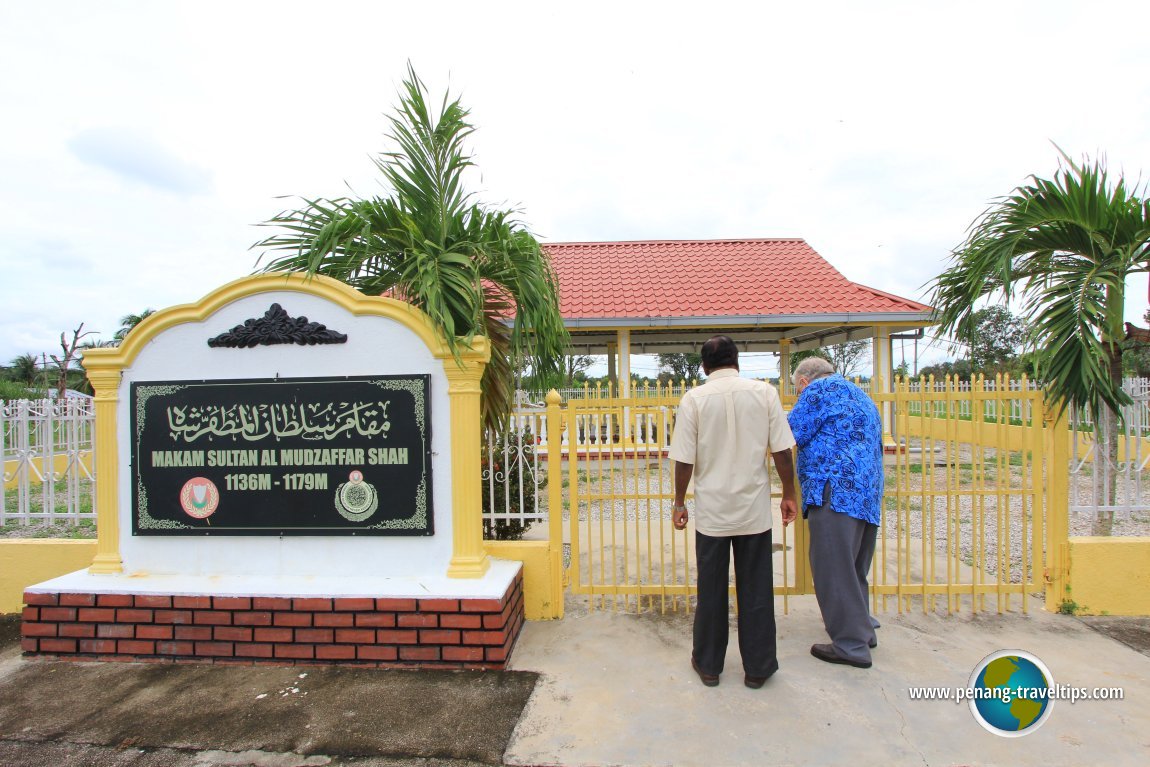 Dato' V. Nadarajan and Michael Rawlinson entering the compound of Makam Sultan Muzaffar Shah I (11 August, 2015)
Dato' V. Nadarajan and Michael Rawlinson entering the compound of Makam Sultan Muzaffar Shah I (11 August, 2015)
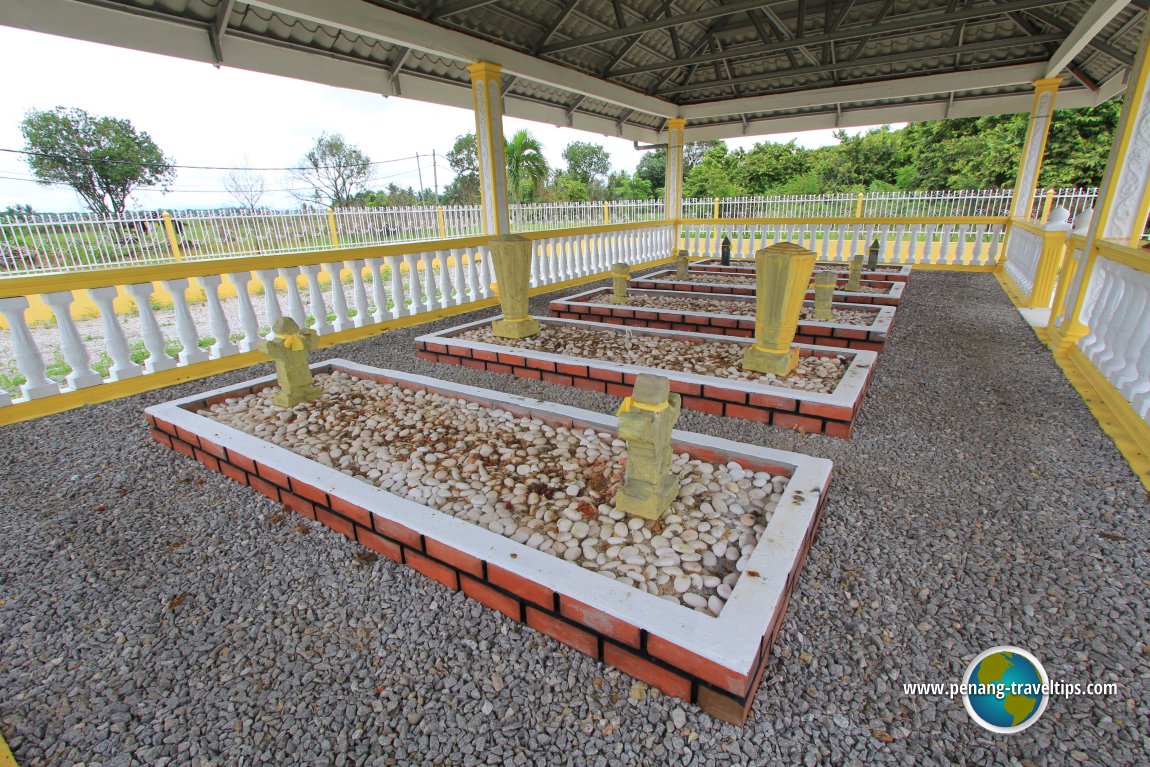 The graves at Makam Sultan Mudzaffar Shah (11 August, 2015)
The graves at Makam Sultan Mudzaffar Shah (11 August, 2015)
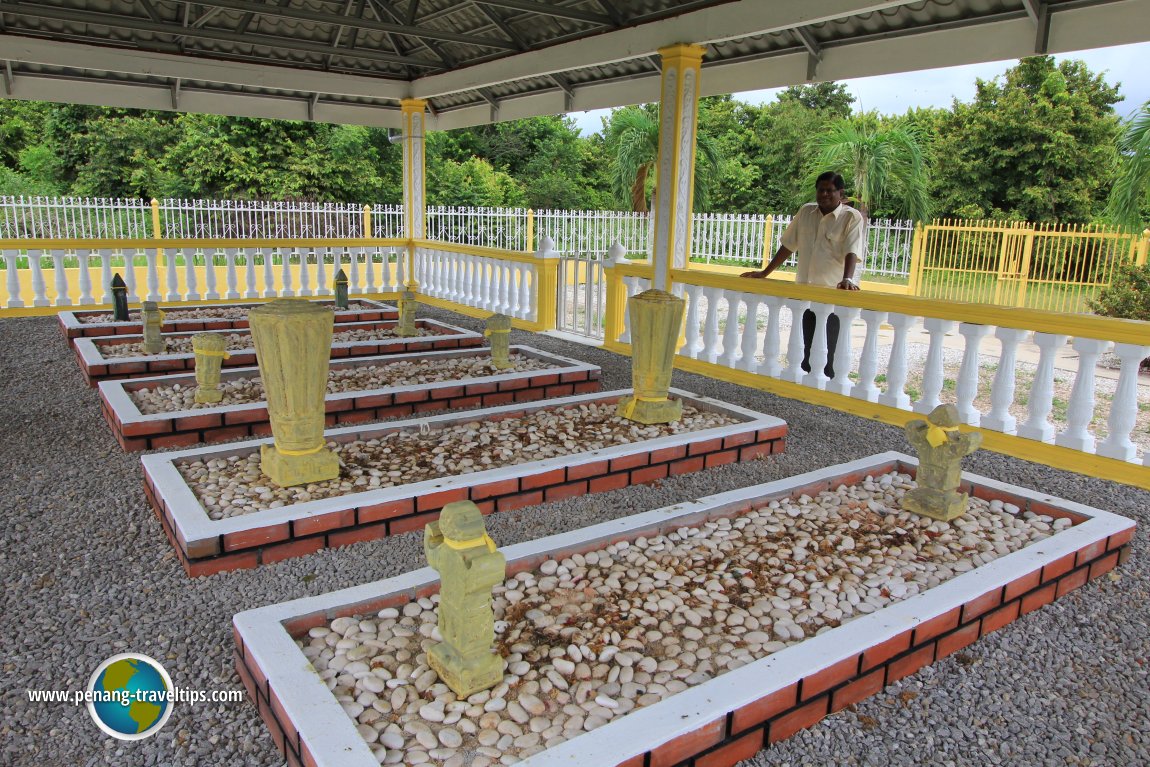 Historian Dato' V. Nadarajan at the Tomb of Sultan Mudzaffar Shah (11 August, 2015)
Historian Dato' V. Nadarajan at the Tomb of Sultan Mudzaffar Shah (11 August, 2015)
Going there
The most straightforward route to reach the tomb is to head north from Sungai Petani on route K167 in the direction of Semeling. You will cross the Merbok River and then reach an intersection, where you turn left in the direction of UiTM Merbok to Jalan Pintasan Semeling (Route 253). As you go along this road, you will pass by the Sungai Batu Archaeological Site. A short distance after the site, to your left, is the turn in. You will go through a palm oil plantation with rather bumpy roads before eaching the tomb. See the map I provided for the exact route.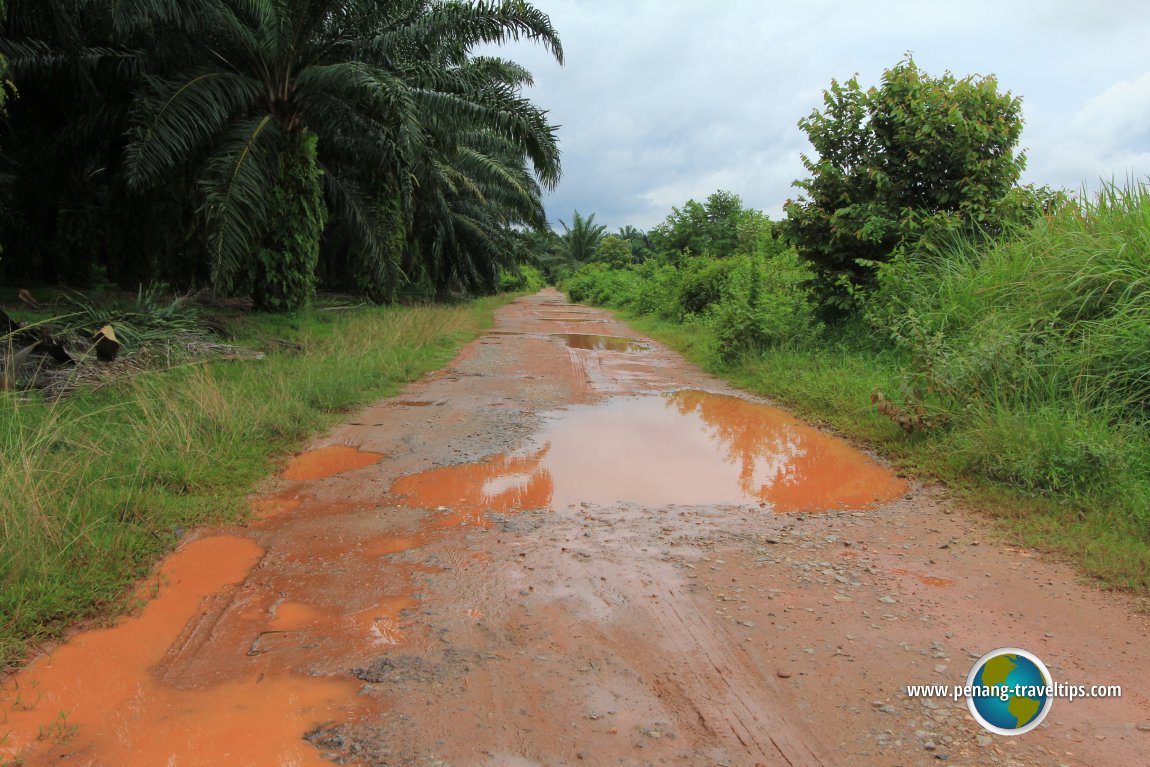 This is the laterite road to Makam Sultan Muzaffar Shah I's tomb. I am looking back at it. (11 August, 2015)
This is the laterite road to Makam Sultan Muzaffar Shah I's tomb. I am looking back at it. (11 August, 2015)
Makam Sultan Mudzaffar Shah I on Google Maps
Location of the Sungai Mas Archaeological Site (Jan 2021)References
- Bygone Kedah by Dato' James F. Augustin
- Bujang Valley by Dato' V. Nadarajan
- Kamus Dewan by Dewan Bahasa & Pustaka
List of Mausoleums in Kedah and Mausoleums in Malaysia
 Latest updates on Penang Travel Tips
Latest updates on Penang Travel Tips

Copyright © 2003-2025 Timothy Tye. All Rights Reserved.

 Go Back
Go Back